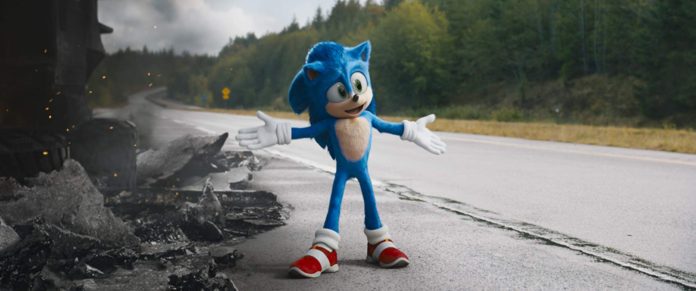If there’s one thing I’ve learned from the 2020 Sonic the Hedgehog movie, featuring the voice of Ben Schwartz, a typically eccentric performance by Jim Carrey, and direction by Jim Fowler, it’s that one doesn’t always need to go fast.
Sure, the LRT decided to be delayed and I barely made it to my screening, but I made it in time to buy popcorn—something that kept the 90 per cent of my brain that wasn’t necessary during the movie—occupied. Because when it comes to the new Sonic movie, produced by the SEGA corporation about our favourite blue devil, having a fast-paced and action-packed storyline can’t save it from obscurity.

Sometimes we just want to sit in the dark and watch a hedgehog try and play ping-pong with himself. Still, in this new age of “remaking something that was perfectly fine in the first place,” I think it’s important to critically evaluate originality in today’s mainstream media.
Nostalgia is a tool that, when carefully utilized, can be the red string that ties a beautiful film together, but constantly pushing for live-action or Westernized remakes and adaptations doesn’t seem very productive. It’s especially annoying when a lot of these movies seem to be driven by content and lacking in creative form.
Looking back on the movies I used to love, that made me love movies in the first place, I was in awe because I had never seen anything like them before. Coincidentally, I’m actually not a Sonic game fan, so technically I’ve never really seen anything like it before. But it was following the formula of every other forgettable children’s film.
Sonic featured uninspired editing, a flat villain, mediocre acting, and nothing but the power of friendship to glue it together like terrible arts and crafts. I haven’t even mentioned that it feels like someone took a hole-puncher to the notion of physics. Sonic can move so fast that time around him slows down, but when we’re being given a rendition of his past he’s somehow too slow to save someone he loves? Then again, who cares if anything makes sense as long as Sonic gets to floss! Twice! (If you don’t know what flossing is, it’s a fun little dance that is so out of fashion even my eight-year-old cousin thinks it is embarrassing).
Now, there is an alternate reading to my overly critical pretentiousness–the movie is baseline entertaining. The jokes usually land, if a little awkwardly, and if you let yourself enjoy it for what it is, it’s fine. The fact that the design team originally made a monstrosity reminiscent of E.T. created enough publicity that when they changed the design, people respected that and wanted to go for the gag of it. Although one has to weep for the animators who worked overtime only to have their studio shut down.
Still, the new design is cute, and Sonic’s blue and red theme lends to some surprisingly appealing cinematography during the pinnacle fight scene. The various children at my screening were hooting and hollering (I went at 3:00 p.m. on Family Day, I was basically asking for it), so I think they enjoyed it. There’s also a brief reference to the notorious “sanic” meme, which felt very rewarding to see played out on the big screen.

Featured image provided by IMDb.






